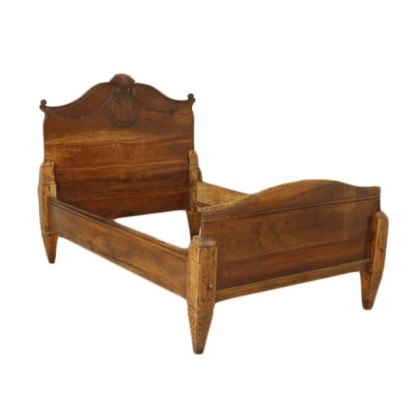Classical bed
Features
Style: Neo-Classical (1765-1790)
Age: 18th Century / 1701 - 1800
Origin: Italy
Main essence: Walnut
Material: Solid Walnut
Description
Single bed in a Neoclassical style. Massive pillars ending with the foot is composed of. The headboard and footboard are shaped with carvings. Has undergone changes. Antiques, Italy, XVIII century.
Product Condition:
Product that due to age and wear and tear requires restoration and resumption of polishing.
Dimensions (cm):
Width: 120
Depth: 182
Bed frame maximum sizes (cm):
Height: 135
Width: 134
Depth: 203
Additional Information
Style: Neo-Classical (1765-1790)
This historical period includes a first phase that can be properly defined as the Louis XVI style.nOnly at a later time, with the maturation of archaeological fashions, was a new vision of furnishing civilization formulated and codified, now fully attributable to the Neoclassical Style.
In fact, both trends coexisted in unison until the last years of the eighteenth century.
nIn the field of cabinet making, the Directoire, Retour d'Egypte, Consular and Empire styles also fall within the neoclassical era.
nFind out more about Neoclassicism with the insights from our blog...
n

























